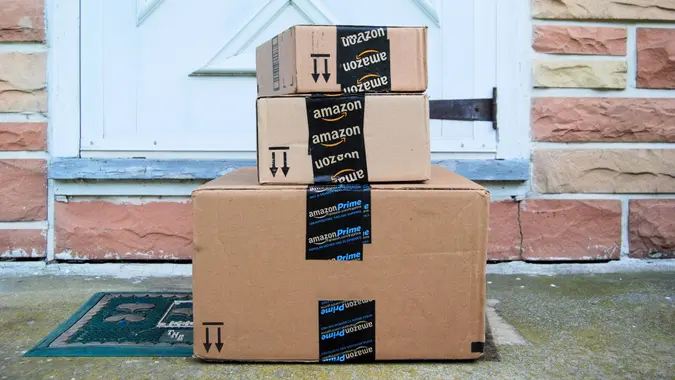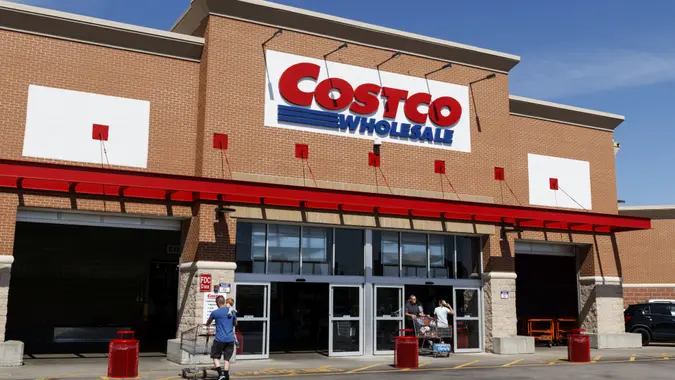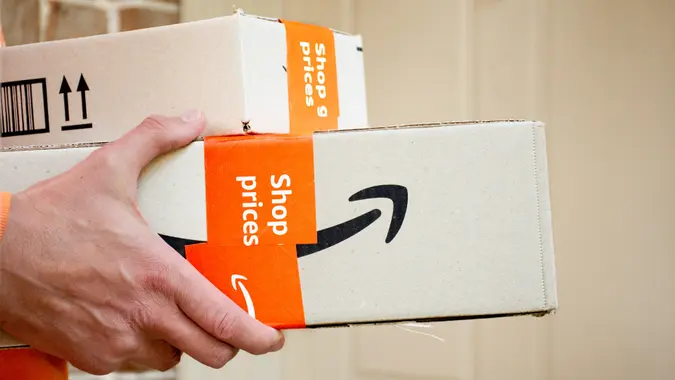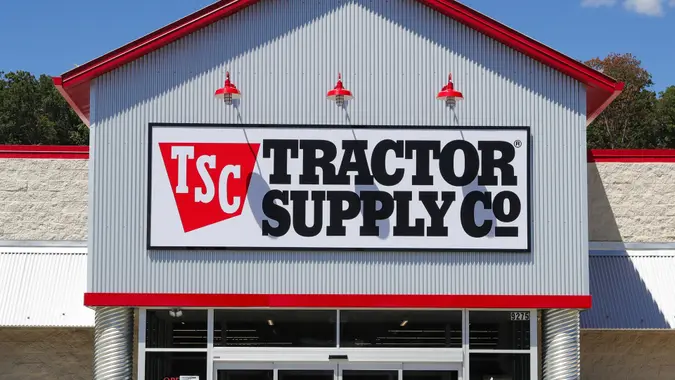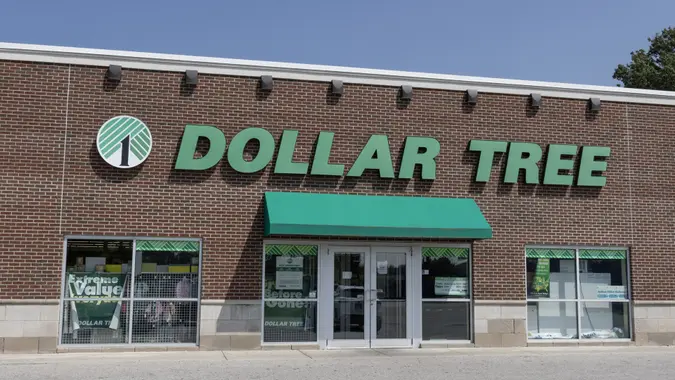I’m the CEO of a Savings Website: 5 Ways To Save Money Bulk Buying

Commitment to Our Readers
GOBankingRates' editorial team is committed to bringing you unbiased reviews and information. We use data-driven methodologies to evaluate financial products and services - our reviews and ratings are not influenced by advertisers. You can read more about our editorial guidelines and our products and services review methodology.

20 Years
Helping You Live Richer

Reviewed
by Experts

Trusted by
Millions of Readers
Stores like Costco and Sam’s Club provide a convenient way to shop in bulk, but customers can sometimes get tempted to put an extra miscellaneous item in their cart — and just like that, it’s easy to get carried away. They may walk out with an entire cartful more than they expected to. To combat this, Andrei Vasilescu, co-founder and CEO of Don’t Pay Full, has insider insight on the best ways to save when buying in bulk.
1. Always Have a List
To ensure you don’t get tempted to overspend, it’s important to know exactly what you plan to purchase when going to a bulk-buying provider like Costco.
“Make a shopping list based on what you actually need and stick to it like glue,” said Andrei Vasilescu. “This helps dodge those sneaky impulse buys, especially the bulk items that you might not use much.”
You may feel the urge, for example, to buy a two-pack of ketchup, simply because it is on sale., but if you and your family don’t use ketchup often, resist the sale and buy a single, smaller amount of ketchup on your next regular grocery store trip.
By having a list and sticking to it, you are keeping yourself on track. Having a shopping list handy also prevents you from perusing the aisles and putting unnecessary items into your cart.
“Shopping is not a sport!” Vasilescu said. “Go in with a mission and avoid aimless wandering. Focus on what you need, not what you want.”
If you find yourself spending hours wandering through the aisles of your local bulk warehouse, it may be time to evaluate how you shop. Getting in and out of the store as quickly as possible will help ensure that you are not spending more than you should.
2. Check Unit Prices
Even at your local grocery store, it is important to check unit prices. Often, unit prices can lead you in the right direction when you are, say, choosing between two different cuts of meat.
“Check out the unit prices — like how much something costs per ounce or pound,” Vasilescu said. This can also help you pick the best deal. There may be two brands that offer the same or similar products, but by checking the unit price, you are guaranteeing you get the most bang for your buck.
3. Compare Prices
Although there are some store brands items worth avoiding for their brand name alternatives, many times a store brand item can be a much better deal.
“Don’t overlook store brands — they’re often just as good as the fancy names but easier on your wallet,” Vasilescu said. Store brands, such as Costco’s Kirkland, are beloved for a reason. Kirkland has many great products that do not sacrifice quality.
For example, store brand essentials like tissue paper or paper towels usually have little to no difference in quality. For purchases like food, you may be better off doing your research. Stay informed and do your research to ensure that you are getting the best quality goods as possible.
By choosing store brands, you are choosing to save money on everyday items. Alternatively, you may decide you want to purchase the item at a different store altogether. There are plenty of budgeting apps that can help shoppers compare store prices easily. If something at Sam’s Club is cheaper at a grocery store, it may be a wise choice to not put it in your cart and wait for your next grocery trip.
“Before you grab something off the shelf, check if it’s cheaper somewhere else,” Vasilescu said.
4. Budget Beforehand
It is much easier to save money if you know exactly how much money you will be spending per shopping trip.
“Set a budget before you go and really stick to it,” Vasilescu asserted. “Leave those credit cards at home if you can, to avoid the temptation to overspend.”
Keeping your credit card at home is essential. Many shoppers view a credit card as that little bit of extra cushion. Because the money is not coming out of your debit account, it can be easy to overspend with a credit card. Yet spending on credit can add up if you are not careful. On your shopping list, right down your exact budget to the dollar amount.
It is okay to go a couple of dollars over — and if you go under, great — but you do not want to be spending beyond your budget.
5. Pick the Right Time To Shop
There are many variables in picking the right time to shop, starting with the time of day — bulk warehouses can often get crowded after 5 PM and on weekends, the times when most people usually find time in their schedule to shop. Picking the right time to shop can eliminate stress.
It’s also important to pick the right time mentally, as your mental state can often influence how much you spend when shopping.
“Never shop when you’re hungry or tired. Trust me, it’s a recipe for buying stuff you don’t need,” Vasilescu said.
If you shop when you’re hungry, you may find yourself clearing out the snack aisle. Things that do not seem appealing when you are full can suddenly seem like an attractive purchase when hungry.
By choosing to shop when you are in the right state of mind, you are preventing any unnecessary purchases. When you are not hungry or tired, it is easier to stick to previously mentioned tactics, such as coming in with a grocery list and not going over your budget.
Shopping in bulk can be a convenient way to save money, but it also risks overspending if you approach it without a plan. Use these tips to save on your next bulk-buying trip.
 Written by
Written by  Edited by
Edited by 





